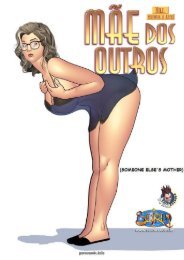AmericanCinematographer201201
Create successful ePaper yourself
Turn your PDF publications into a flip-book with our unique Google optimized e-Paper software.
Top left: As two
cousins (Michael
Ontkean, left, and
Beau Bridges) look
on, Matt prepares to
decide the future of
the family estate.
Top right, clockwise
from left: B-camera
1st AC Richard Brock,
A-camera operator
Scott Sakamoto,
director Alexander
Payne and
cinematographer
Phedon Papamichael,
ASC line up a shot.
Bottom: Papamichael
checks the exposure.
natural-looking. I like to make sure the
audience is never really aware of the
source. I don’t want the image to look
stylized or ‘lit.’ I use all the window
sources, and the motivation is always
correct — you’ll never see me do two
people opposite each other, both backlit.
We were dealing with a lot of
contrast on this movie, especially in the
interiors that opened out to views of the
sea. There was a huge range of exposure.
We used the full 16 stops of the 5213!
Our goal was to try to bring the levels up
inside without it looking lit, and to try to
control the exteriors with big guns —
18Ks that were either bounced or
pushed through big 12-bys. We used
Half Grid, Full Grid and, if we bounced,
bleached muslin or Ultrabounce. We also
made extensive use of Daylight Blue
bounces. I started using them on 3:10 to
Yuma [AC Oct. ’07] and found that they
look very natural. It’s a little closer to the
look of blue skies, and it feels like a
natural bounce off the water. For closeups
outside, we often handheld 4-by-8s
or 4-by-4s and had people walking with
white or Daylight Blue bounce.
What kind of set does Payne
maintain?
Papamichael: Alexander creates
an intimate atmosphere. It’s very important
to him that everyone feels the filmmaking
process is not a machine, and
that we are not making a product. He
literally knows the name of every driver
and every security guard on the first day.
We didn’t have hordes of hair-andmakeup
people, and last touches were
forbidden. We were just making this
small film in a very genuine way. There
was no video village and no video assist.
On the set, we had the operator, the
assistant, the boom operator, the actors
and Alexander. His style is very economical.
There was usually a brief conversation
about how we were going to cover
the scene, and then we usually did three
to seven takes. Everyone was open to
reacting to what the actors did and
taking advantage of the moment. We
crafted it piece by piece. It’s the kind of
filmmaking I really like to do.
You’ve got another intimate
drama in theaters now, too,
Clooney’s Ides of March.
Papamichael: On big-budget
studio projects, you can get some satisfaction
from pulling off this gigantic
enterprise, but on a movie like The
Descendants, you feel like you’ve told a
piece of the story every day. I like being
able to bounce back and forth between
large and small projects, but movies like
The Descendants and Ides of March are a
little closer to my heart.
TECHNICAL SPECS
2.40:1
3-perf Super 35mm
Panaflex Platinum
Panavision Primo
Kodak Vision3 500T 5219, 200T 5213
Digital Intermediate
➣
24 January 2012 American Cinematographer













